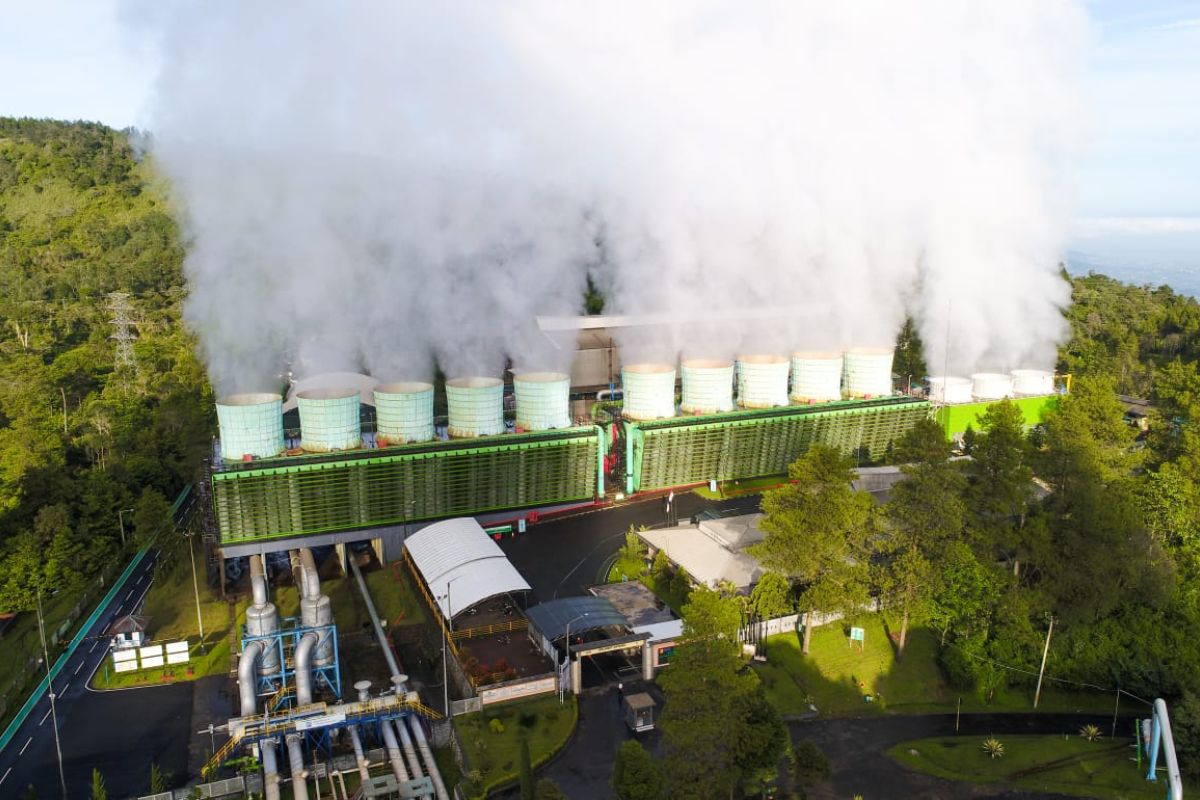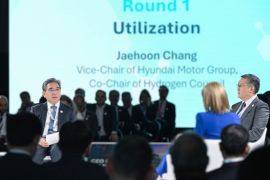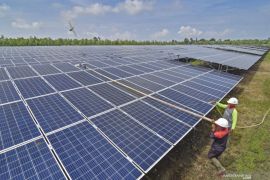The threat of environmental damage is one of the costs that needs to be borne by inhabitants of the planet as a result of the industrial revolution, which has been incessantly demanding propulsion energy.
Indubitably, the revolution has forced humans to exploit fossil-based energy. However, on the other hand, it has also prompted them to come up with solutions, including the potential of the use of new and renewable energy.
In the current era of high level of mobility, a new foundation has been established for suppressing the risks of environmental damage triggered by an increasing amount of carbon emissions generated by power plants.
This foundation refers to the so-called green hydrogen, a derivative product of geothermal energy.
It is believed that green hydrogen can play the role of a protagonist in the path toward the realization of transition from the use of conventional polluting energy into more environmental-friendly energy.
Unlike fossil-based fuels, hydrogen will only generate water, electricity, and heat through conversion processes. However, hydrogen prevails over fossil energy in terms of the exhaust generated since the former neither produces greenhouse gas nor fine dust.
Moreover, one can acquire hydrogen by simply applying a method commonly known as electrolysis that involves the decomposition of water compound (H20) into oxygen (O2) by utilizing electric current.
Bearing that in mind, it is safe to say that hydrogen energy serves as a tool offered by nature for bringing back balance to the environment. Concurrently, such energy also offers opportunities to humans to create new markets and values for the world of industry.
The international community has proposed three general recommendations for energy transition, with one of them pertaining to the need to expedite the switch to using sustainable energy by reducing the intensity of carbon emissions generated by the use of conventional energy.
Secondly, the world has realized the importance of ensuring that the energy transition process is going in a fair manner and is affordable by all parties.
Meanwhile, the last recommendation concerns the urgency to provide consumers with an easier access to clean and modern energy.
The three recommendations are in line with the Sustainable Development Goals (SDGs), particularly with the ones related to the alleviation of poverty, enhancement of health and welfare, promotion of the development of sustainable urban and residential areas, quick response to climate change and its impacts, and preservation and strengthening of global partnerships for the sake of making sustainable development come true.
As a state-run company tasked with managing Indonesia’s energy, Pertamina is paying close attention to the efforts to carry out energy transition, including by promoting the optimization of green hydrogen energy.
The company has incorporated green energy into its program aimed at accelerating transition to the use of renewable energy.
President Director of Pertamina, Nicke Widyawati, noted that Indonesia is blessed with abundant sources of hydrogen, such as geothermal, natural gas, oil, coal, and water.
“Indonesia wields enormous natural potential that can be used to generate hydrogen in an effort to succeed in energy transition. It would be a shame if we could not optimize the abundant natural wealth to support energy transition,” she elaborated.
Indonesia’s opportunities
The Republic of Indonesia ranks second-largest in the world for geothermal-based electricity systems after the United States. Of its total geothermal-based electricity capacity of 23.9 gigawatts (GW), Indonesia has optimized 2.13 GW, with 88 percent of it being managed by Pertamina.
Despite having a high level of efficiency in helping Indonesia achieve its energy transition target, the optimization of green hydrogen requires special processing techniques.
To convert hydrogen into green hydrogen, Pertamina conducts water decomposition using electricity generated by solar power plants.
By developing reliable solar power plants, Indonesia can generate electricity instrumental for producing hydrogen in an eco-friendly way, which, in turn, will help the country suppress its carbon emissions and mitigate climate change effects.
Germany is among the countries to have been successful in developing hydrogen energy. In fact, hydrogen has become one of the foundations of the European country’s economy.
Pertamina has been putting serious efforts to conduct research on green energy, including by collaborating with international companies to explore projects of green hydrogen and ammonia development by utilizing new and renewable energy resources on Sumatra Island.
The research cooperation is aimed at exploring the feasibility of development of a facility that can produce at least 40 thousand tons of green hydrogen annually, supported by 250-400 megawatts of geothermal energy in the initial phase. In future, the amount of green hydrogen generated by the facility can be increased to 80-160 thousand tons per year depending on the availability of geothermal energy and market demands.
Pertamina’s resolve to optimize green hydrogen constitutes a huge step toward the achievement of the net-zero emissions target by 2060.
It should be noted that Indonesia lies in the so-called Ring of Fire, providing the country with yet another opportunity to produce and optimize hydrogen by tapping into the potential of geothermal energy.
Support from all relevant stakeholders is of the essence to make the ongoing energy transition process a success.
Related news: BRIN eyes Indonesia to become global hydrogen supplier: Official
Related news: Java 9, 10 power plant to use green ammonia, green hydrogen
Related news: Preserving hydrogen as Indonesia's sustainable energy in the future
Translator: Afut Syafril, Tegar Nurfitra
Editor: Sri Haryati
Copyright © ANTARA 2023












